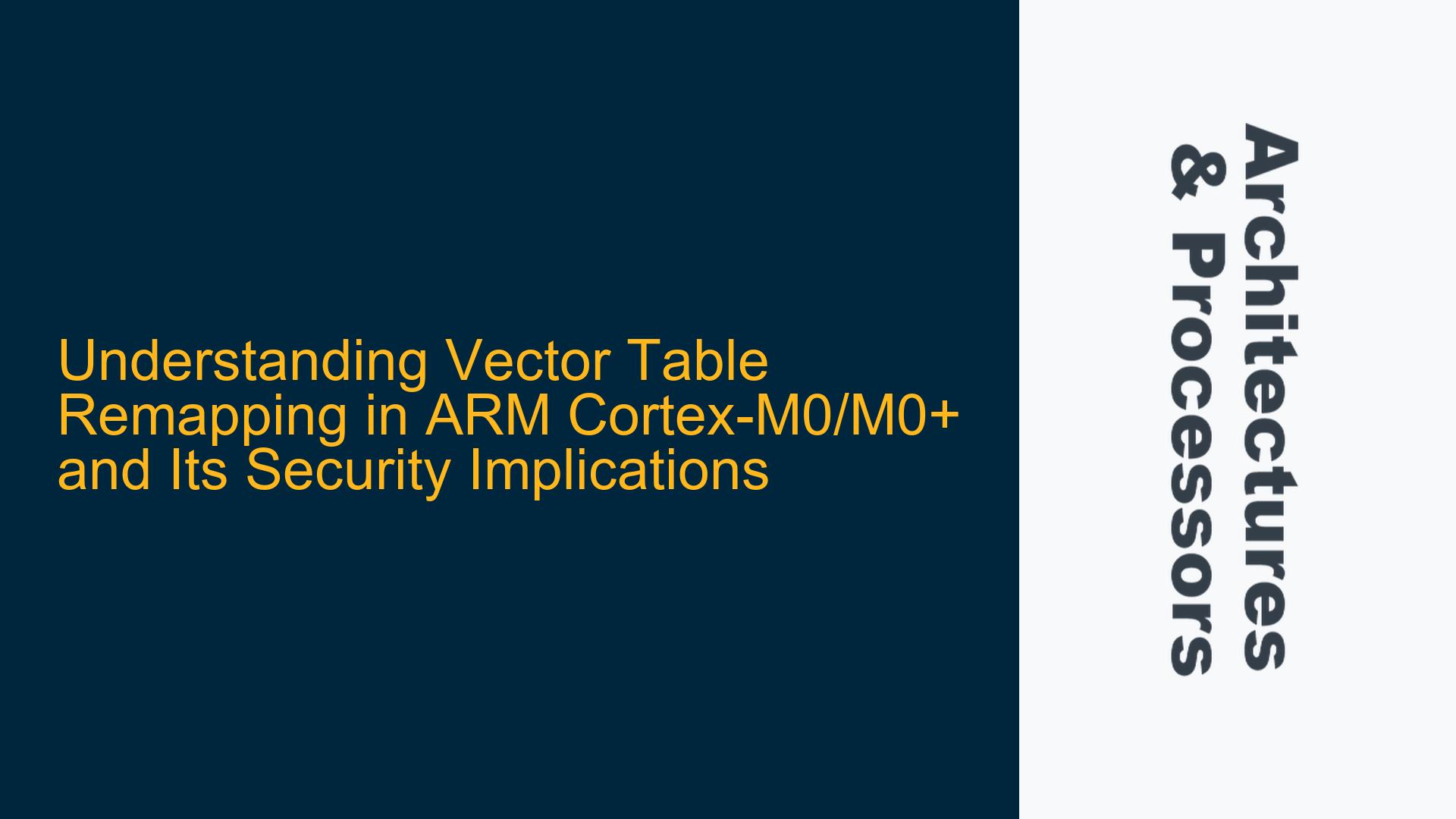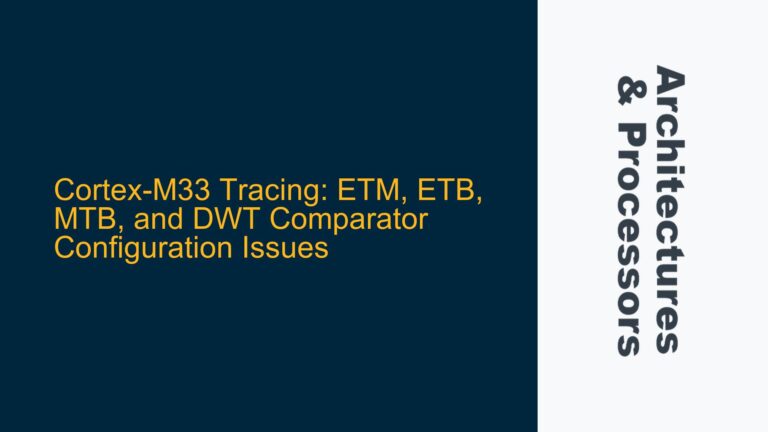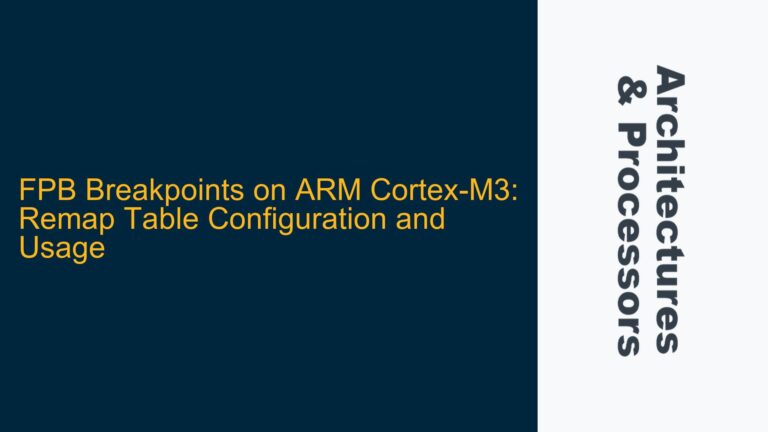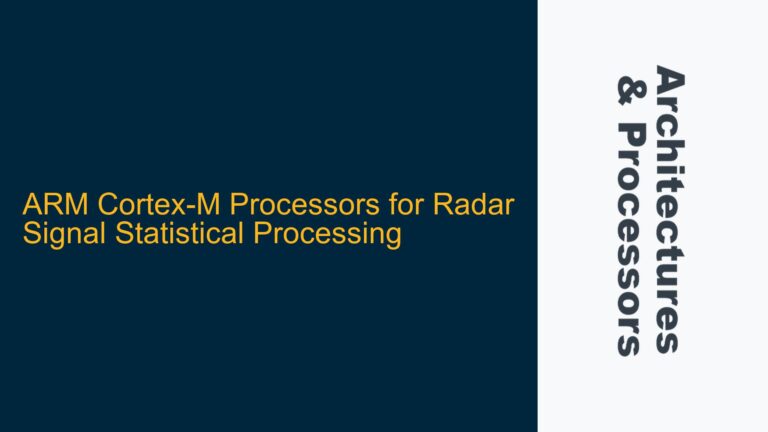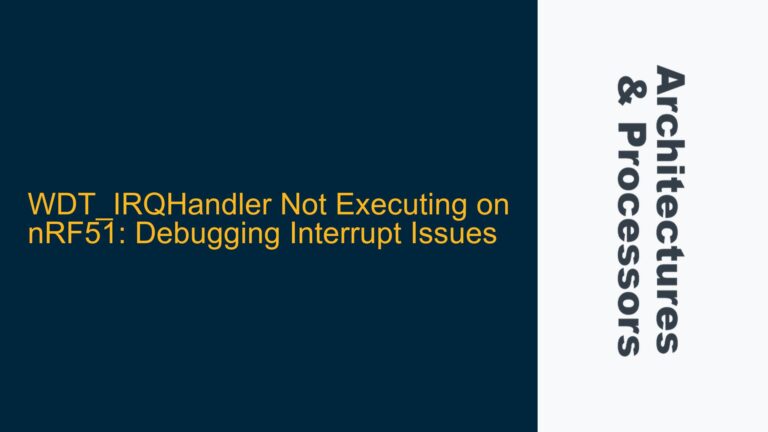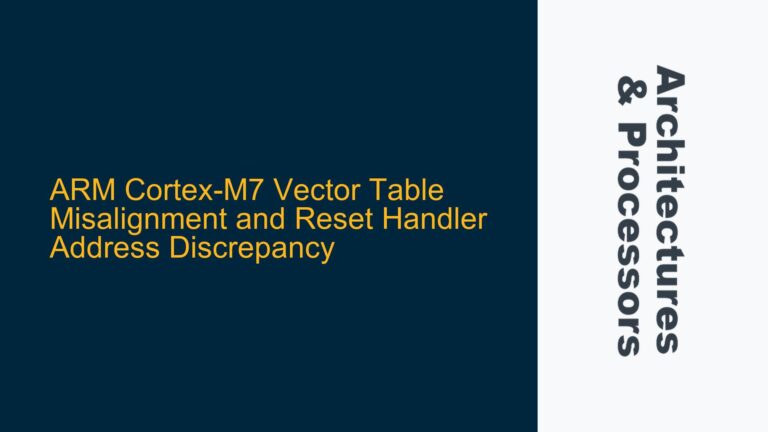Vector Table Remapping in ARM Cortex-M0/M0+: Functionality and Security Concerns
Vector table remapping is a feature available in the ARM Cortex-M0+ processor, allowing the relocation of the vector table from its default address at 0x0 to a new address specified in the Vector Table Offset Register (VTOR). This feature is not present in the Cortex-M0, where the vector table remains fixed at 0x0. The primary purpose of vector table remapping is to align the memory map of the system with specific requirements, such as swapping in SRAM instead of Flash at the 0x0 address. This flexibility enables developers to reprogram the vector table dynamically, which can be useful in various scenarios, including firmware updates, debugging, and system reconfiguration.
However, the original question raises an important point: Can vector table remapping enhance the security of a product, and if so, what types of attacks can it guard against? To answer this, we must first understand the mechanics of vector table remapping, its typical use cases, and how it interacts with the system’s memory architecture. From there, we can explore potential security benefits and limitations.
In ARM Cortex-M0+, the VTOR register is part of the System Control Block (SCB) and allows the vector table to be relocated to any address aligned to the size of the vector table. This relocation is particularly useful in systems where the default Flash memory at 0x0 is not writable during runtime, or where the vector table needs to be modified dynamically. For example, in a system with multiple operating modes, the vector table can be swapped to point to different exception handlers depending on the current mode.
Despite its utility, vector table remapping is not inherently a security feature. Its primary design goal is to provide flexibility in memory management. However, when used strategically, it can mitigate certain types of attacks, particularly those targeting the integrity of the exception handling mechanism. For instance, if an attacker attempts to overwrite the vector table in Flash memory, remapping the vector table to a protected region of SRAM can prevent such tampering. This approach relies on the assumption that the SRAM region is secured through other means, such as memory protection units (MPUs) or hardware-based access controls.
To fully understand the security implications, we must delve into the potential vulnerabilities associated with the vector table and how remapping can address them. This requires a detailed examination of the ARM Cortex-M0/M0+ exception model, the role of the vector table in exception handling, and the types of attacks that could exploit weaknesses in this mechanism.
Vulnerabilities in Fixed Vector Tables and Attack Vectors
The fixed vector table in ARM Cortex-M0 processors presents several potential vulnerabilities that could be exploited by attackers. Since the vector table is located at a fixed address (0x0), it becomes a predictable target for malicious activities. Below, we explore the key vulnerabilities and attack vectors associated with fixed vector tables:
1. Vector Table Corruption via Memory Overwrite
One of the most straightforward attacks involves overwriting the vector table in Flash memory. If an attacker gains write access to the Flash memory region containing the vector table, they can modify the addresses of exception handlers to point to malicious code. This type of attack can be executed through various means, such as exploiting buffer overflows, injecting malicious firmware updates, or leveraging hardware vulnerabilities to gain unauthorized write access.
For example, if the Reset Handler address in the vector table is overwritten, the system will execute malicious code upon the next reset. Similarly, modifying the addresses of other exception handlers, such as the HardFault or SVCall handlers, can allow an attacker to take control of the system when specific exceptions occur.
2. Code Injection via Exception Handlers
Even if the vector table itself is not modified, attackers can target the exception handlers referenced by the vector table. If these handlers are stored in writable memory (e.g., SRAM), an attacker can overwrite the handler code with malicious instructions. This type of attack is particularly effective if the system does not implement proper memory protection mechanisms to restrict write access to critical code regions.
3. Denial-of-Service (DoS) Attacks
Attackers can also exploit the fixed vector table to launch DoS attacks. For instance, by corrupting the vector table or the exception handlers, an attacker can cause the system to enter an unrecoverable state, such as an infinite loop or a continuous reset cycle. This can render the system inoperable, leading to a loss of functionality or service.
4. Privilege Escalation via Exception Handling
In systems with multiple privilege levels (e.g., user and supervisor modes), the vector table plays a critical role in managing transitions between these levels. If an attacker can modify the vector table or the exception handlers, they may be able to escalate their privileges by forcing the system to execute code in a higher privilege mode. This can enable the attacker to bypass security checks and gain unauthorized access to sensitive resources.
5. Side-Channel Attacks Targeting Exception Handling
While less direct, side-channel attacks can also exploit the fixed vector table. By analyzing timing variations, power consumption, or electromagnetic emissions during exception handling, an attacker can infer information about the system’s operation and potentially identify vulnerabilities to exploit.
Leveraging Vector Table Remapping for Enhanced Security
While vector table remapping is not a security feature per se, it can be used strategically to mitigate some of the vulnerabilities associated with fixed vector tables. Below, we explore how vector table remapping can enhance system security and the specific types of attacks it can help guard against.
1. Protecting Against Vector Table Corruption
By relocating the vector table to a protected region of SRAM, developers can prevent attackers from overwriting the vector table in Flash memory. This approach requires that the SRAM region is secured through additional mechanisms, such as an MPU or hardware-based access controls. For example, the MPU can be configured to restrict write access to the SRAM region containing the vector table, ensuring that only trusted code can modify it.
2. Isolating Exception Handlers
Vector table remapping allows developers to isolate exception handlers in a dedicated memory region, separate from the rest of the application code. This isolation can make it more difficult for attackers to inject malicious code into the exception handlers, as they would need to bypass additional security measures to gain write access to the isolated region.
3. Dynamic Vector Table Updates
In systems with multiple operating modes or security states, vector table remapping enables dynamic updates to the vector table based on the current context. For example, in a secure boot process, the vector table can be remapped to point to secure exception handlers during the boot phase and then remapped again to point to non-secure handlers once the system is operational. This dynamic remapping can help prevent attackers from exploiting the vector table during critical phases of operation.
4. Mitigating DoS Attacks
By relocating the vector table to a protected memory region, developers can reduce the risk of DoS attacks that rely on corrupting the vector table or exception handlers. Even if an attacker gains write access to the Flash memory, they would be unable to modify the vector table if it is stored in a protected SRAM region.
5. Enhancing Privilege Separation
Vector table remapping can be used in conjunction with privilege separation mechanisms to enhance system security. For example, the vector table can be remapped to point to different sets of exception handlers depending on the current privilege level. This ensures that exceptions are handled appropriately based on the context, reducing the risk of privilege escalation attacks.
Implementing Vector Table Remapping: Best Practices and Considerations
To effectively leverage vector table remapping for security purposes, developers must follow best practices and consider several key factors during implementation. Below, we outline the steps and considerations for implementing vector table remapping in ARM Cortex-M0+ systems.
1. Configuring the VTOR Register
The first step in implementing vector table remapping is to configure the VTOR register in the SCB. The VTOR register specifies the base address of the vector table, which must be aligned to the size of the vector table. For example, if the vector table contains 32 exception handlers, the base address must be aligned to a 128-byte boundary.
SCB->VTOR = (uint32_t)&new_vector_table | 0x1; // Set VTOR with new base address
2. Securing the Remapped Memory Region
Once the vector table is remapped to a new memory region, it is essential to secure this region using available hardware mechanisms. For example, the MPU can be configured to restrict write access to the remapped region, ensuring that only trusted code can modify the vector table.
MPU->RBAR = (new_vector_table_region_base & MPU_RBAR_ADDR_MASK) | MPU_RBAR_VALID_MASK | MPU_RBAR_REGION_MASK(0);
MPU->RASR = MPU_RASR_ENABLE_MASK | MPU_RASR_SIZE_MASK(10) | MPU_RASR_AP_MASK(0x3) | MPU_RASR_XN_MASK;
3. Validating Vector Table Integrity
To further enhance security, developers can implement integrity checks on the vector table. For example, a checksum or cryptographic hash of the vector table can be computed during system initialization and verified periodically during operation. If the checksum or hash does not match the expected value, the system can trigger a security exception or reset.
uint32_t checksum = compute_checksum(&new_vector_table, VECTOR_TABLE_SIZE);
if (checksum != EXPECTED_CHECKSUM) {
trigger_security_exception();
}
4. Handling Dynamic Context Switches
In systems with multiple operating modes or security states, developers must ensure that the vector table is remapped appropriately during context switches. This requires careful coordination between the operating system or firmware and the hardware mechanisms responsible for managing the VTOR register.
void switch_context(uint32_t new_vector_table_base) {
SCB->VTOR = new_vector_table_base;
// Perform additional context switch operations
}
5. Testing and Validation
Finally, developers must thoroughly test and validate the implementation of vector table remapping to ensure that it functions as intended and does not introduce new vulnerabilities. This includes testing for edge cases, such as invalid vector table addresses, and verifying that the system behaves correctly under attack scenarios.
Conclusion
Vector table remapping in ARM Cortex-M0+ processors provides a powerful tool for enhancing system flexibility and, when used strategically, can contribute to improved security. By relocating the vector table to a protected memory region and implementing additional security measures, developers can mitigate several common attack vectors, including vector table corruption, code injection, and privilege escalation. However, it is essential to recognize that vector table remapping is not a standalone security solution and must be integrated into a broader security framework to achieve meaningful protection. Through careful implementation and adherence to best practices, developers can leverage this feature to build more robust and secure embedded systems.
